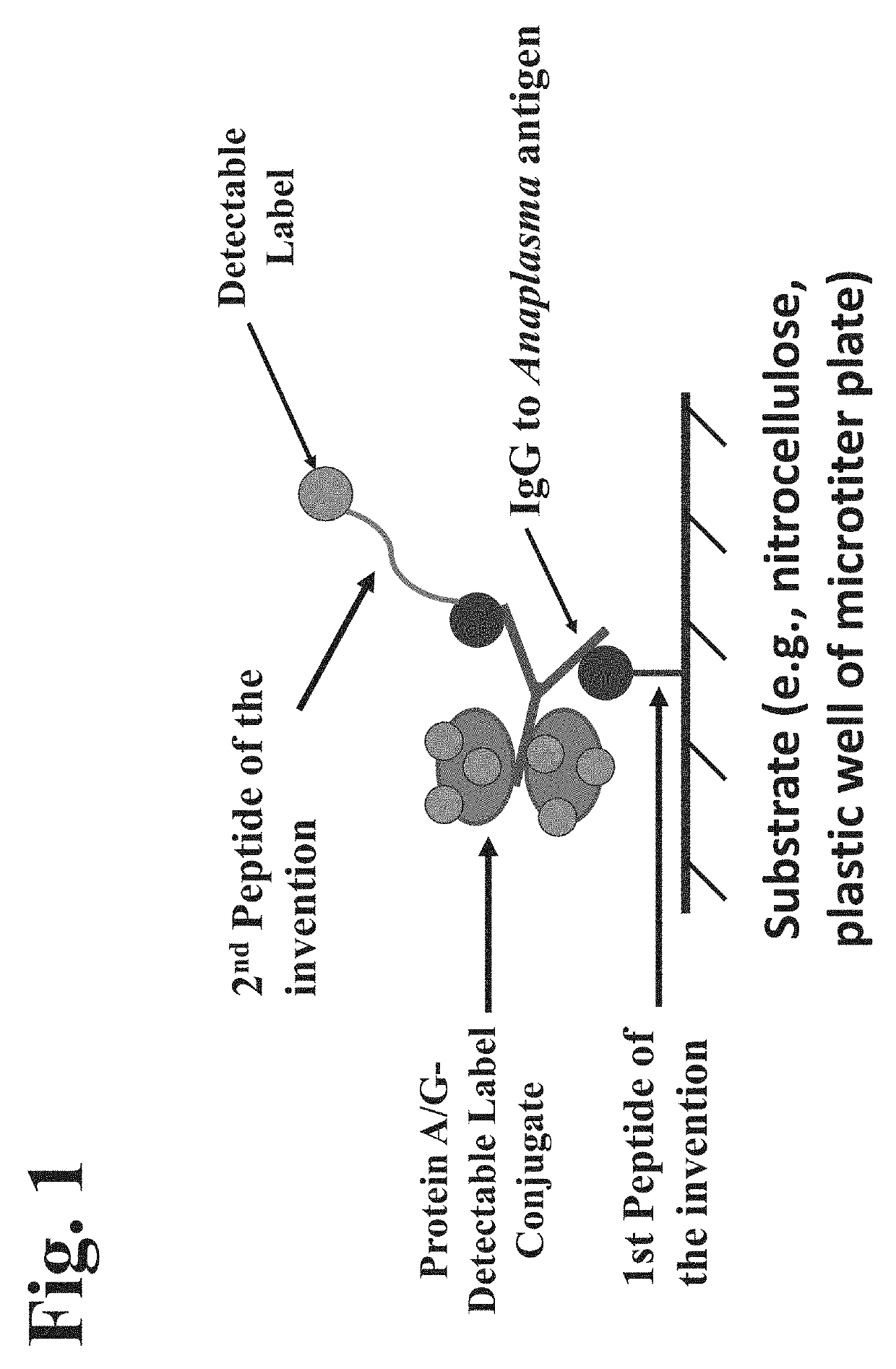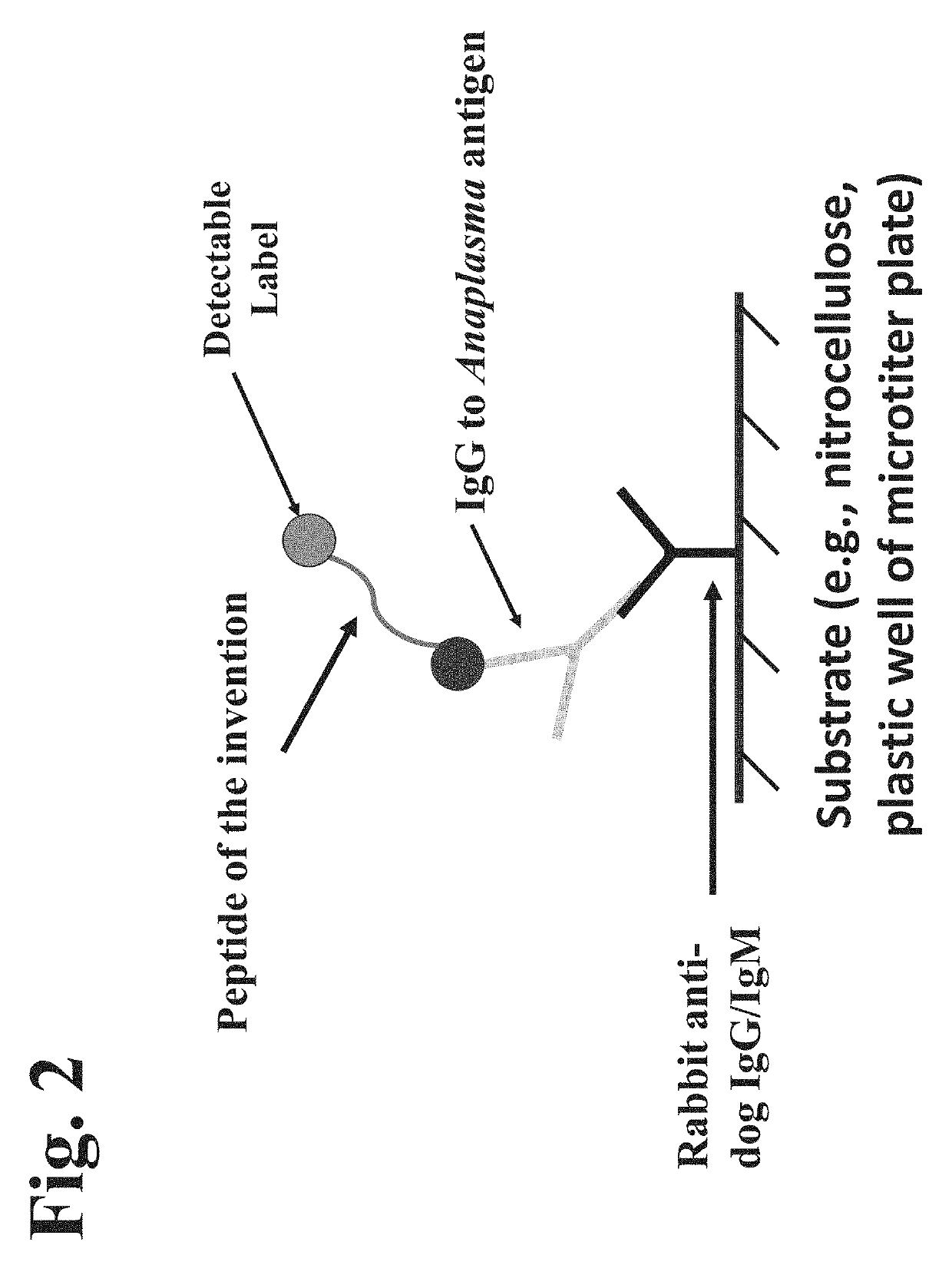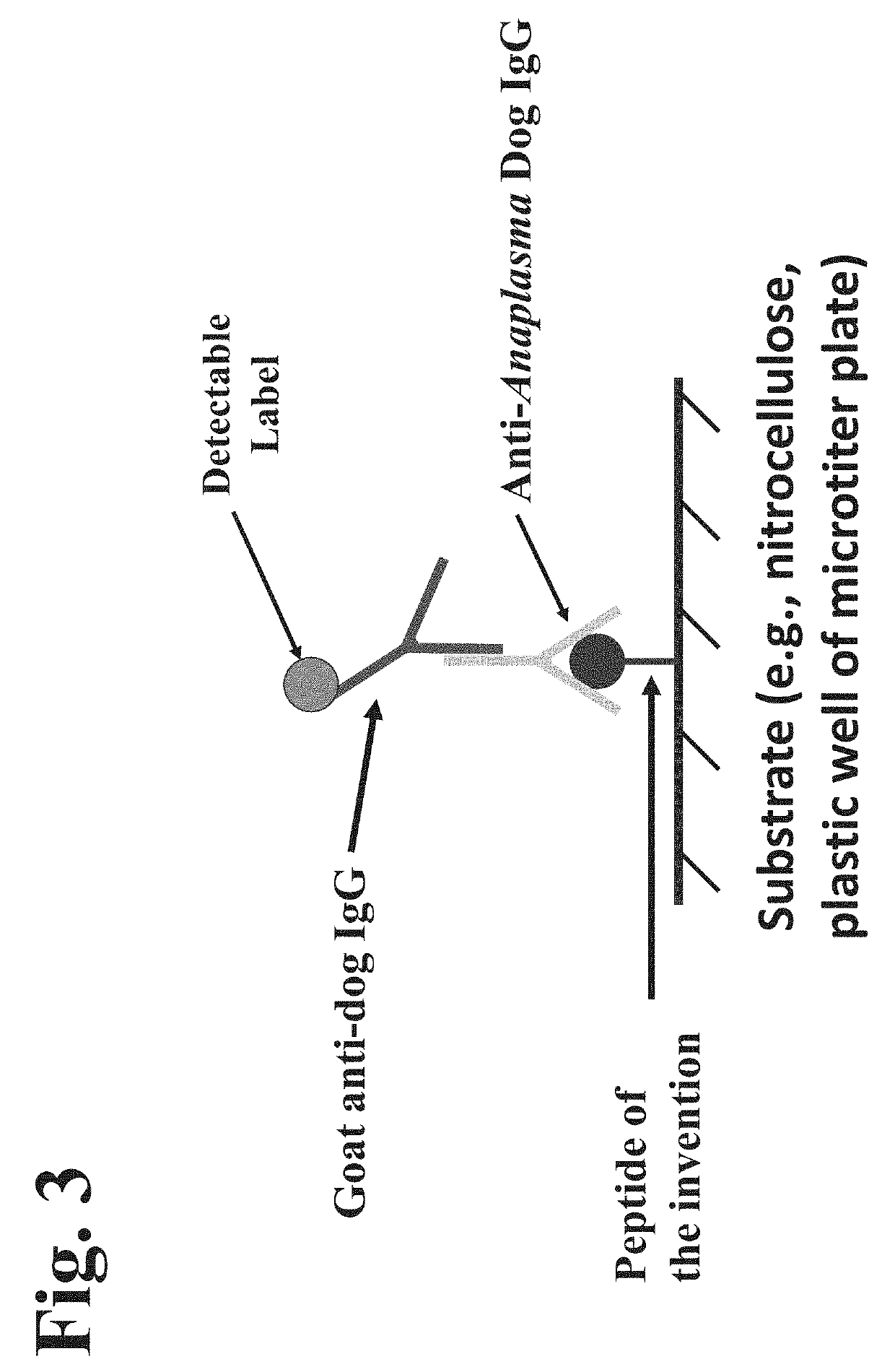Peptides, devices, and methods for the detection of anaplasma antibodies
a technology of anaplasma antibodies and peptides, applied in the field of peptides, devices, and methods for the detection of anaplasma antibodies, can solve the problems of limited usefulness of anti-anaplasma /i>antibodies tests
- Summary
- Abstract
- Description
- Claims
- Application Information
AI Technical Summary
Benefits of technology
Problems solved by technology
Method used
Image
Examples
example 1
ay
[0174]Two different populations of peptides were synthesized using standard synthesis procedures. Each peptide in the first population of peptides (APL-ID1) contained a sequence of SEQ ID NO: 3. The first population of peptides specifically binds to antibodies elicited by both A. phagocytophilum and A. platys. Each peptide in the second population of peptides (APL-ID2) contained a sequence of SEQ ID NO: 4. The second population of peptides specifically binds to antibodies elicited primarily by A. platys.
[0175]Each peptide in the two populations was linked separately to the carrier protein bovine serum albumin (BSA) using thio-ether chemistry. The resulting BSA-peptide conjugates were used as capture entities in 96-well ELISA plates to create two separate ELISA assays (one population of peptides per plate). The plates were blocked with 5% non-fat milk powder dissolved in 25 mM borate buffer (pH9.5) to prevent undesirable non-specific binding.
[0176]Dogs were inoculated with A. phag...
example 2
low Assay
[0179]A lateral flow immunoassay in a double antigen sandwich format was constructed to detect the presence of antibodies specific for Anaplasma antigens. A population of peptides comprising peptides with a sequence of SEQ ID NO: 3 (APL-ID 1), SEQ ID NO: 6 (APL-ID5.1), or SEQ ID NO: 7 (APL-ID6) was linked to BSA and the resulting complexes were used both as test conjugate (peptides labeled with gold nanoparticles) and as capture (immobilized at the test line of the device). The signal produced at the test line was enhanced by Protein A and Protein G-gold conjugates (amplifier) added to the labeled peptide conjugate. The device is depicted in FIG. 7.
[0180]The operation of the device is illustrated in FIG. 8. To conduct the assay, one drop of anti-coagulated whole blood, serum, or plasma is applied to the sample port of the device. The blood separation pad filters blood cells from whole blood. Plasma (or serum) mobilizes and binds specifically to the test conjugate present on...
example 3
[0182]An indirect fluorescent antibody test is constructed using latex beads coated with one or more peptides of the invention. In certain embodiments, the peptides defined by SEQ ID NO: 3 (APL-ID 1), SEQ ID NO: 4 (APL-ID2), and / or SEQ ID NO: 6 (APL-ID5.1) are used. The peptides of the invention are coated onto maleimide-derivatized latex beads using thio-ether chemistry. Alternatively, the peptides of the invention may be conjugated to BSA via thio-ether or similar chemistries and are passively absorbed on to latex beads. A population of such beads is then immobilized on a glass slide using known techniques.
[0183]To conduct the assay, one drop of serum or plasma (diluted appropriately with a suitable buffer) from dogs suspected of having anti-Anaplasma antibodies, is applied to the glass slide coated with latex beads. Following a suitable incubation time, the unreacted materials are washed away and a drop of fluorescently labeled anti-dog IgG (or IgM) is a...
PUM
| Property | Measurement | Unit |
|---|---|---|
| diameter | aaaaa | aaaaa |
| diameter | aaaaa | aaaaa |
| diameter | aaaaa | aaaaa |
Abstract
Description
Claims
Application Information
 Login to View More
Login to View More - R&D
- Intellectual Property
- Life Sciences
- Materials
- Tech Scout
- Unparalleled Data Quality
- Higher Quality Content
- 60% Fewer Hallucinations
Browse by: Latest US Patents, China's latest patents, Technical Efficacy Thesaurus, Application Domain, Technology Topic, Popular Technical Reports.
© 2025 PatSnap. All rights reserved.Legal|Privacy policy|Modern Slavery Act Transparency Statement|Sitemap|About US| Contact US: help@patsnap.com



